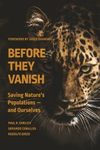About this book
At the end of the nineteenth century, North America suffered a catastrophic loss of wildlife driven by unbridled resource extraction, market hunting, and unrelenting subsistence killing. This crisis led powerful political forces in the United States and Canada to collaborate in the hopes of reversing the process, not merely halting the extinctions but returning wildlife to abundance. While there was great understanding of how to manage wildlife in Europe, where wildlife management was an old, mature profession, Continental methods depended on social values often unacceptable to North Americans. Even Canada, a loyal colony of England, abandoned wildlife management as practiced in the mother country and joined forces with like-minded Americans to develop a revolutionary system of wildlife conservation. In time, and surviving the close scrutiny and hard ongoing debate of open, democratic societies, this series of conservation practices became known as the North American Model of Wildlife Conservation.
In The North American Model of Wildlife Conservation, editors Shane P. Mahoney and Valerius Geist, both leading authorities on the North American Model, bring together their expert colleagues to provide a comprehensive overview of the origins, achievements, and shortcomings of this highly successful conservation approach. This volume
- reviews the emergence of conservation in late nineteenth–early twentieth century North America
- provides detailed explorations of the Model's institutions, principles, laws, and policies
- places the Model within ecological, cultural, and socioeconomic contexts
- describes the many economic, social, and cultural benefits of wildlife restoration and management
- addresses the Model's challenges and limitations while pointing to emerging opportunities for increasing inclusivity and optimizing implementation
Studying the North American experience offers insight into how institutionalizing policies and laws while incentivizing citizen engagement can result in a resilient framework for conservation. Written for wildlife professionals, researchers, and students, The North American Model of Wildlife Conservation explores the factors that helped fashion an enduring conservation system, one that has not only rescued, recovered, and sustainably utilized wildlife for over a century, but that has also advanced a significant economic driver and a greater scientific understanding of wildlife ecology.
Contents
Acknowledgements
1. Exploring the North American Model of Wildlife Conservation: Setting the Stage for Evaluation
2. North American Ecological History as the Foundation of the Model
3. Societal Context for North American Model Emergence
4. The Great Early Champions
5. Critical Legislative and Institutional Underpinnings of the North American Model
6. The Landscape Conservation Movement
7. Hunting and Vested Interest as the Spine of the North American Model
8. Science and the North American Model: Edifice of Knowledge, Exemplar for Conservation
9. North American Waterfowl Management: An Example of a Highly Effective International Treaty Arrangement for Wildlife Conservation
10. Private-Public Collaboration and Institutional Successes in North American Conservation
11. Social, Economic, and Ecological Challenges to the North American Model of Wildlife Conservation
12. A Comparison of the North American Model to Other Conservation Approaches
Conclusion
Customer Reviews
Biography
Shane P. Mahoney, the former executive director of science for wildlife and protected areas with the government of Newfoundland and Labrador, Canada, is the current president of Conservation Visions Inc. and vice-chair of the International Union for the Conservation of Nature's Sustainable Use and Livelihoods Specialist Group. An internationally recognized conservationist and wildlife advocate, he is considered a foremost expert on the North American Model of Wildlife Conservation.
Biologist Valerius Geist is emeritus professor in the Faculty of Environmental Design at the University of Calgary. The author of numerous books, including Deer of the World: Their Evolution, Behavior, and Ecology and Buffalo Nation: History and Legend of the North American Bison, he first articulated the North American Model of Wildlife Conservation in 1995.
Contributors:
- Leonard A. Brennan
- Rosie Cooney
- James L. Cummins
- Kathryn Frens
- Valerius Geist
- James R. Heffelfinger
- David G. Hewitt
- Paul R. Krausman
- Shane P. Mahoney
- John F. Organ
- James M. Peek
- William F. Porter
- John Sandlos
- James A. Schaefer








































